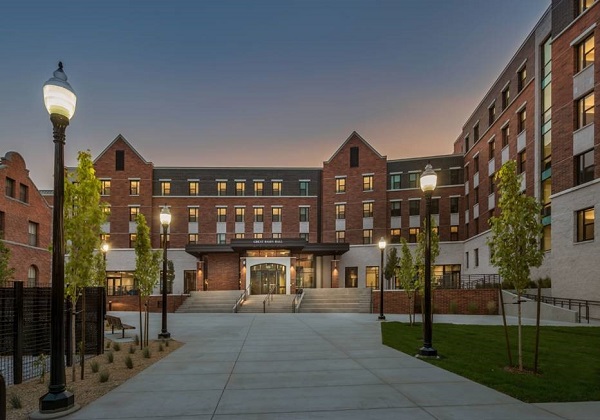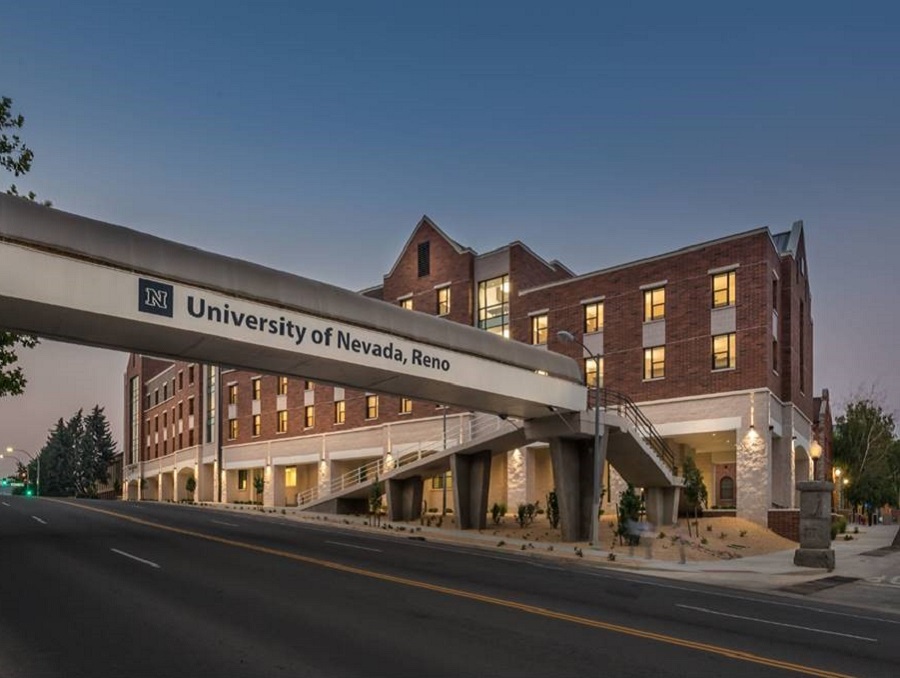Great Basin Hall, which opened at the University of Nevada, Reno in 2018, has earned LEED Gold Certification. LEED, which stands for Leadership in Energy and Environmental Design, is "the most widely used green building rating system in the world," according to the U.S. Green Building Council. It provides a framework for creating " healthy, highly efficient and cost-saving green buildings." Earning LEED Gold Certification is a crowning achievement in sustainability.
While the newest on-campus residence hall was completed and opened in 2018, the formal certificates for the achievement were only received by the University earlier this month.
This is the second LEED Gold residence hall, Peavine Hall being the first, and one of only four LEED-certified buildings on the University’s campus. In addition to the two residence halls, the other LEED-certified buildings are the Living Learning Community residence hall and the Marguerite Wattis Petersen Athletic Academic Center.
According to Cory Jennings, senior project manager in University Facilities Services, LEED standards have become common practice in construction on campus. All new facilities built at the University are required to meet a minimum of level of LEED Silver Certification or equivalent, as stipulated by the University Design and Construction Standards.

One factor that contributed to the certification of the building was the recycling of waste produced during construction.
"Of the waste that leaves the site, 75% has to be repurposed,” Jennings said. “This is all manifested and documented, throughout the construction process.”
An investment in the future
Many design attributes of the building ensure environmental sensitivity. High-quality insulation was used from the walls to the windows; low-consumption plumbing fixtures, including faucets, shower heads and toilets, were used throughout; and a heat-reflective roofing system, along with automated lighting, heating and cooling systems, keep power costs to a minimum.
All of these green building practices save the University money on utilities while making softer impact on the environment. Details like these are an investment, Jennings said, and it's an investment the University will see return on well into the future.












